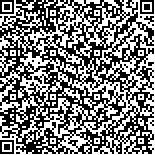| 引用本文: |
梁诗瑶,刘倩倩,黄胜,颜冬兰,林丽美,吴萍.六味地黄丸药渣中4种活性成分含量测定及抗氧化活性研究[J].湖南中医药大学学报,2021,41(5):707-713[点击复制] |
|
| |
|
|
| 本文已被:浏览 2504次 下载 1288次 |
| 六味地黄丸药渣中4种活性成分含量测定及抗氧化活性研究 |
| 梁诗瑶,刘倩倩,黄胜,颜冬兰,林丽美,吴萍 |
| (湖南中医药大学药学院湘产大宗药材品质评价湖南省重点实验室, 湖南 长沙 410000;九芝堂股份有限公司, 湖南 长沙 410000) |
| 摘要: |
| 目的 采用HPLC法测定六味地黄丸药渣中丹皮酚、23-乙酰泽泻醇B、茯苓酸、熊果酸的含量,并评价六味地黄丸药渣及单味饮片(熟地黄、泽泻、牡丹皮、山茱萸)药渣的体外抗氧化活性。方法 Waters Athena C18色谱柱(4.6 mm×250 mm,5 μm),以乙腈-0.08%磷酸溶液为流动相进行梯度洗脱;柱温为35℃;流速1.0 mL/min;检测波长为210 nm;进样量10 μL。采用ABTS法、DPPH法以及FRAP法测定六味地黄丸药渣的抗氧化能力。结果 丹皮酚、23-乙酰泽泻醇B、茯苓酸、熊果酸分别在0.004~0.040、0.078~0.780、0.048~0.480、0.052~0.520 μg范围内线性关系良好;平均加样回收率分别为103.47%、97.14%、103.92%、100.18%(RSD<3.0%,n=6)。六味地黄丸药渣和单味饮片药渣对DPPH、ABTS自由基清除作用和Fe3+还原能力均较好;其中牡丹皮、山茱萸药渣的总体抗氧化效果优于其他药渣,二者在低浓度2 mg/mL时有一定的清除率,且随着浓度的增加,最高清除率可分别达到84.51%和76.39%。结论 该含量测定方法准确可靠,证实了药渣中还残留大量的活性成分,且具有良好的抗氧化生物活性。表明六味地黄丸药渣具有一定的营养价值,为药渣的综合开发利用提供依据。 |
| 关键词: 六味地黄丸药渣 HPLC 丹皮酚 23-乙酰泽泻醇B 茯苓酸 熊果酸 含量测定 |
| DOI:10.3969/j.issn.1674-070X.2021.05.010 |
| 投稿时间:2021-01-04 |
| 基金项目:长沙市重大科技专项(kq1902010);湖南中医药大学中药学一流学科项目(校行科字[2018]3号);湖南中医药大学研究生创新课题(2019CX58)。 |
|
| Determination of Four Active Components in Liuwei Dihuang Pill Residue and Its Antioxidant Activity |
| LIANG Shiyao,LIU Qianqian,HUANG Sheng,YAN Donglan,LIN Limei,WU Ping |
| (Key Laboratory of Hunan Province for Quality Evaluation of Bulk Medicinal MaterialsProduced in Hunan Province, Changsha, Hunan 410000, China;Jiuzhitang Limited Company, Changsha, Hunan 410000, China) |
| Abstract: |
| Objective To establish a HPLC method for the simultaneous determination of paeonol, 23-acetyl alisol B, poria acid and ursolic acid in Liuwei Dihuang Pill residue, and to evaluate the in vitro antioxidant activity of Liuwei Dihuang Pill residue and dregs of single decoction pieces[Shudihuang (Rehmanniae Radix Praeparata), Zexie (Alismatis Rhizoma), Mudanpi (Moutan Cortex), Shanzhuyu (Corni Fructus)] Methods Waters Athena C18 column (4.6 mm×250 mm, 5 μm) was used. Acetonitrile and 0.08% phosphoric acid were used as mobile phase for gradient elution. The column temperature was 35℃, the flow rate was 1.0 mL/min, the detection wavelength was 210 nm, and the injection volume was 10 μL. The antioxidant capacity of Liuwei Dihuang Pill residue was determined by ABTS method, DPPH method and FRAP method. Results The linear relationship of paeonol, 23-acetyl alisol B, poria acid and ursolic acid was good in the range of 0.004~0.040, 0.078~0.780, 0.048~0.480, 0.052~0.520 μg, and the average recovery rate was 103.47%, 97.14%, 103.92% and 100.18% (RSD < 3.0%, n=6). Liuwei Dihuang Pill residue and dregs of single decoction pieces had good scavenging effect on DPPH, ABTS free radical and Fe3+ reduction ability; the overall antioxidant effect of Mudanpi (Moutan Cortex) and Shanzhuyu (Corni Fructus) residue was better than other drug residues, and they had certain scavenging rate at low concentration (2 mg/mL), and the highest scavenging rate could reach 84.51% and 76.39% respectively with the increase of concentration. Conclusion The method is accurate and reliable, which proves that there are a lot of active ingredients in the residues. The pharmacological experiments also further verify that the residues of Liuwei Dihuang Pill residue and dregs of single decoction pieces have good antioxidant biological activity. The residue of Liuwei Dihuang Pill have certain nutritional value, which provides the basis for the comprehensive development and utilization of the residue. |
| Key words: Liuwei Dihuang Pill residue HPLC paeonol 23-acetyl alisol B poria acid ursolic acid content determination |
|

二维码(扫一下试试看!) |
|
|
|
|




